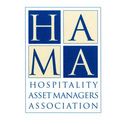Hospitality Asset Managers Association (HAMA) Study Documents Growing Revenue Acquisition Costs Outpacing Hotel Revenue Growth
Officials of the Hospitality Asset Managers Association ("HAMA") today announced the results of a multi-year study that demonstrates that revenue acquisition costs outpaced hotel revenue growth from 2009 through 2012. The results were presented in "The Rising Costs of Customer Acquisition," a white paper commissioned in late 2013.
The white paper addresses an analysis of the financial results of more than 100 upper upscale and luxury hotels with brand affiliations. It specifically looks at both the external costs of brand allocations (for marketing, advertising, major promotions, national and global sales offices and loyalty programs) and third party commissions (for group and transient bookings), as well as the internal costs of marketing and sales programs, including local marketing, sales staffing and other expenses, including reservations staff.
"It is critical for us to understand and control external costs, including the cost of customer acquisition." said Ruby Huang, HAMA's president. "Hoteliers need to be fully cognizant of ever increasing costs so that they can make intelligent decisions in how to deal with them."
"This study grew from our board's commitment to sponsor an independent review of the costs owners are incurring to attract and retain customers," said Dave Hogin, HAMA's vice president. "While many of us felt that costs were increasing at a pace out of step with revenue growth, we wanted a more in-depth look than any of our members could do individually."
The study focused on 104 upper upscale and luxury managed properties with brand affiliations in the U.S. and Canada. From 2009 to 2012, the room revenue of this group increased by 23 percent, almost seven percent compounded annually. The cost of customer acquisition from 2009 through 2012 grew almost as quickly as revenue, at just under 23 percent.
The white paper addresses the following topics:
- 2009-2012 Cost Increases Compared to Revenue Growth – While total customer acquisition costs rose by 23 percent, brand allocations grew by 37 percent and third-party commissions by 34 percent, while local property marketing (including property specific Internet and paid search) increased by only six percent, or less than two percent per year.
- The Changing Marketing Mix – As a result of the disproportionate growth of external marketing and sales costs, properties now control less of their marketing spend. (44 percent versus 49 percent in 2009).
- Commission Cost Growth Differed Widely by Brand –For the top 10 brands included in this study, cost increases during the three years ranged from a low of 10 percent to a high of 72 percent.
- Franchised Properties Fared Even Worse –Room revenue of franchised properties grew by just under 22 percent during the 2009-2012 time frame, but their total acquisition costs rose by almost 27 percent, driven by increases in commissions of 48 percent and brand allocations of 36 percent and mitigated by on-property spend of only 15 percent.
"The travel industry has been undergoing enormous changes over the past 10 years driven by a combination of technology, a global recession and the changing nature of global business," said study author Frank Camacho, a senior travel industry executive and consultant. "Owners should be examining the long term relationships they have to ensure that they still produce economic benefits. If not, they need to consider this when choosing partners and negotiating new agreements.
"Implicit in the findings of this study is the conclusion that channel mix has a substantial impact both on revenue growth and its profitability. If rising brand costs are unavoidable in the near term, then effective channel optimization becomes even more critical," Camacho added.
About HAMA
HAMA members are involved in asset management, acquisition, financing and disposition of hotels and resorts and are directly responsible for making decisions concerning capital investments, renovations, asset repositioning, operational policies and management selection. The association's mission is to, "Further the knowledge and skills of our members, facilitate peer relationships, and serve as the collective voice of members and hospitality asset owners." Its U.S. members represent more than 3,500 hotels and resorts across every major brand, accounting for 775,000 hotel rooms, 250,000 employees, $40 billion in annual revenue and $3 billion in capital expenditures. The organization boasts an additional 245 international affiliate members, as well.
Chris Daly
+1 703 435 6293
HAMA
